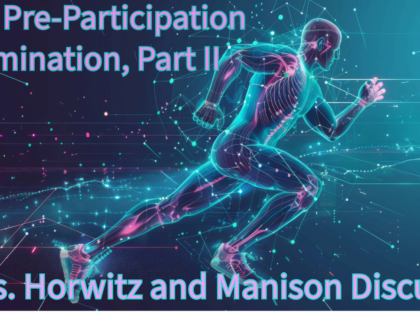So, you’re a runner and keep getting ankle sprains. You are a powerlifter and keep ‘pulling’ your hamstrings. You are recovering from shoulder surgery and you simply cannot get back to where you should be even though the surgeon tells you all is okay. Your knees are just not recovering from what was supposed to be a simple meniscus repair.
WHY can’t you get better? You feel better but things just aren’t working the way they should…well…here is the likely reason and you’ve never heard about it.
Arthrogenic Inhibition sounds like a complicated concept, but luckily, it is not. Defined as ‘an ongoing reflex reaction of the musculature surrounding a joint after distension or damage to structures of that joint, Arthrogenic Inhibition is readily apparent with really any joint injury. This includes injury from life, sport, and surgery, and anything else you can possibly do that damages a joint.
We do not hear about Arthrogenic Inhibition (I’ll refer to it as AI from now on in this blog for simplicity sake) too much in the fitness field, and this is unfortunate. We need to be very aware of it, because if we are not, complications from it can cause a lot of unnecessary damage to our body.
Years ago took the Certified Chiropractic Extremity Practitioner program led by Dr. Kevin Hearon. He is an extremity and sports injury legend in my field. I remember one of his favorite sayings was ‘Joint dysfunction inhibits adjacent muscular activity.’ I’m not sure if the science was there to back this up 20-30 years ago, but it sure as heck is now. To take this a bit further, damaged/dysfunctional joints can also cause facilitation in muscles. Wow! This is such incredible information.
Let’s say you get an ankle sprain and it swells up. You put ice on it, compress it, and stay off it for a few days. Then you slowly get back into activity as your therapist tells you to get active as quickly as you can. Soon it actually ‘feels better.’ Well, guess what? You still have a bad ankle and it’s going to create problems as you get older.
Why is this? Much of the damage to a joint, in this case the ankle, is not seen or felt. The damage resides in your brain’s inability to manage the neurological system that pertains to movement in that area. This is the reason why joint problems need more than just basic care. In fact, 40% of lateral ankle sprains lead to chronic ankle instability. The key to restoring proper function to ANY joint that is damaged is proper therapy. This includes including manual therapy along with rehabilitative exercises that identify the inhibitions and facilitations and train them properly. It’s not proper to just go in and stretch everything or strengthen everything. Each movement has to be broken so that we are specific with the rehabilitation program.
This blog is a research review, and as such, we are discussing some of the great information. We got the information of this blog from a great study. It is titled titled ‘Arthrogenic Muscle Response of the Quadriceps and Hamstrings with Chronic Ankle Instability‘ by Sedory et. Al. It was published in the Journal of Athletic Training in 2007. As a side note, there are several studies on the topic of AI and they all have shown about the same data. The point is that joint damage leads to altered muscle function. The studies have been performed in different regions of the body to see if there is a parallel with what is happening. Well, there is.
Knowledge of AI is vital to anyone who is active. If you have an injury, Don’t Be a Meathead and write it off as being nothing. You must consider every injury as having broad body implications. If you fail to do this, you could be developing injuries far more dangerous. Smart athletes do not tough things out. They get appropriate care so they can get back to their sport as quickly as possible. Why tempt allostatic load? Oh, allostatic load is the cumulative wear and tear on the body. You can consider it as the factor that determines how quickly you will break down.
The study in question tried to answer what happens with the quadriceps and hamstrings when you have chronic ankle instability. The condition is common. We need to know if muscles in the lower extremity that are not directly attached to the ankle also have neurological compromise. This study addressed a great topic because prior to this, only the muscles around the damaged joint in question were assessed. Of course, they had neurological damage.
In clinical practice, I see these imbalance patterns all day long, but having legitimate peer-reviewed studies to confirm this is wonderful. Don’t think that a study from 2007 is old. It’s not! This topic is highly relevant, and it is still not receiving the consideration it deserves in the sport rehabilitation community.
Please allow me to cut to the chase before you (or I) fall asleep. I apologize that this is getting long.
The study found that chronic ankle sprains lead to inhibition of both right and left hamstrings and same side facilitation of the quadriceps. As a bit of background, the soleus muscle (there are others involved but we’ll stick to this one for this discussion) gets inhibited with lateral ankle sprains. Due to this inhibition, the quadriceps ‘fire’ more to make up for this instability. Generally, when there is inhibition somewhere, there will be facilitation elsewhere. This pattern can go on for some period of time and as we’ve now learned, in different locations.
Bottom line: if you have injury to a joint, get help from someone who specializes in rehabilitation of extremity/sports injury. Look for physical therapists or chiropractors who have special credentials demonstrating knowledge in extremity and sports injuries.
Don’t Be a Meathead is protected by Copyright laws. If you wish to post any content from www.dontbeameathead.com, you must obtain express (written…this can be email) permission before doing so. We love sharing important information to help people and we do appreciate your respect for our intellectual property.





